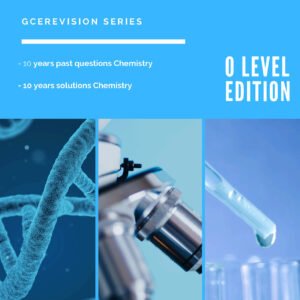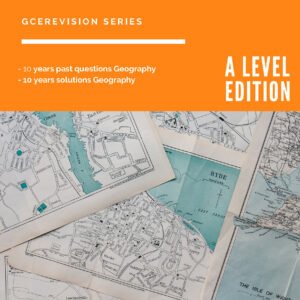CHAPTER SIX
6.0. PHYLUM ANNELIDA
6.1. General Characteristics
- Annelids are wormlike animals with true segments (“ANNULUS” = RING)
- They are triploblastic like nematodes and platyhelminths and are bilaterally symmetrical
- They possess a coelom (are true coelomates) unlike platyhelminth
- They possess a gut with a mouth and an anus. This allow different region of the gut to carry out different digestive functions.
- The segmentation in annelids is described as metameric (like with arthropod). This is because the number and age of segment are the same. This is not the case with the proglottids of Platyhelminthes whose number and age vary
Segmentation is important to the annelids because it helps them borrow (dig) by this they can escape from predator’s adverse environment condition and exploit new habitats. Some members have special segments for specific functions e.g. clitellum int the earthworm (for production)
Examples are earthworm, ragworm and leaches.

diag earth worm
class: Oligochaeta
Lumbriscus terrestris (earth worms)

dig hirundine
class: Hirudinea
(leeches) hirudo

dig ragworm
class: polychaeta
Nereis (rag worm)
6.2. Classification of Annelida
This phylum is divided into three classes;
Class: Polychaeta
Class: Oligochaeta
Class: Hirundine
The following tables gives us more information of this
| Polychaeta | Oligochaeta | Hirundine |
| External segments correspond to inner septa. | External segments correspond with inner septa | External segment more numerous than inner septa |
| Distinct head with appendages | Indistinct head | Indistinct head |
| Eyes usually present | No eyes | Eyes present |
| Parapodia present bearing chaetae | No parapodia; few small chaetae | No parapodia; no chaetae |
| No clitellum | Clitellum present; cocoons produced | Clitellum present; |
| Sexes are separate | Hermaphrodite but there is cross fertilization | |
| Larvae stage called trochophore | No larvae stage: development is direct | No larvae stage development is direct. |
| External fertilization | Fertilization in the cocoons | Fertilization in the cocoons |
| Example are rag worms | Examples is earthworm | Example is leaches |
6.3. Comparing the body wall of acoelomates

- The four groups all have ectoderm, mesoderm, endoderm and enteron
- The acoelomates have no coelom;
- The pseudocoelom have a pseudocoelom (false coelom) while the coelom
- The pseudocoelom and coelom respectively and are found between the mesoderm
6.4. Mode of life of annelids
Nutrition:
Their digestive track is a long tube within the body cavity extending from the mouth to the anus of the worms. There is a muscular pharynx at the front end of the digestive track. It enables this worm to feed on a wide variety of food. some are carnivores’ others are herbivores while some others are detritivores (feeding on pieces of dead organism e.g. pealing of fruits) Many annelids can extend your pharynx thru the mouth.
Gaseous exchange:
Many annelids carry out gaseous exchange through the skin. Hence the skin needs to be moist. To prevent desiccation (dry up) annelids such as earth worms secretes a thin protective coating called a cuticle to hold moisture around them. Aquatic annelids e.g. leach breed through their gills located at the side of the body as some.
Transport:
The circulatory system is closed comprising of 2 blood vessels that run through the length of their body. Blood moves towards the head in the dorsal vessel and towards the back of the worm in the ventral vessel. Across each segment, a pair of smaller vessels called vessels connect the two vessels. The ring vessels around the anterior region larger in seize and contract rhythmically pumping blood thru the rhythmically pumping blood through the system. They are sometimes called the heart.
Excretion:
Annelids use nephridia for excretion. This are pairs of tube. Into which excretory products collects. The metabolic waste in them are released into the gut and during defecation they are sent out through the anus.
Coordination:
The nervous system of annelids is well developed. They possess a brain at the front of the body on top of the gut. 2 large nerves connect the brain with a pair of ganglia at the gut from these ganglia, a nerve cord runs through the entire length of the worm transmitting impulses to the cell’s organs. The sense organs in some annelids especially the marine forms include tentacles, statocysts, chemical receptors, and 2 or more pairs of eyes. Many other annelids have much simpler sensory system. Earthworms e.g. only have the sensory cell on the skin with no specialized sense organs.
Movement:
Annelids have two groups of muscles in their body walls. One grp called the longitudinal muscle runs from the anterior to the posterior region of the worm. When they contract the warm become shorter. The second group of muscles runs in circles around the body of the warm. When e.g. contract, the worm become skinnier. Marine annelids use this muscle to wriggle the water while the burrowing annelids use them to false their ways through heavy sediments.
6.5. Reproduction in Annelids.
Most annelids reproduce sexually although a few are able to reproduce asexually. in asexual reproduction, an annelid is cut into two or more segments and each segment grows the missing part. This is also called regeneration. During sexual reproduction the females release eggs into water while the males release sperms to fertilize them externally. This occurs with the aquatic. Others e.g. the earth worms although hermaphrodite undergoes internal fertilization involving copulation during which the sperm is exchanged. Each individual the store the sperms receive in special sacs. When the eggs get ready for fertilization, the clitellum secretes a mucus ring into which the eggs and sperms are releases. The ring then sleeps off the worm body and forms a cocoon that shelters the eggs. The eggs hatch into young ones that look like the parent: i.e. there is no metamorphosis.







